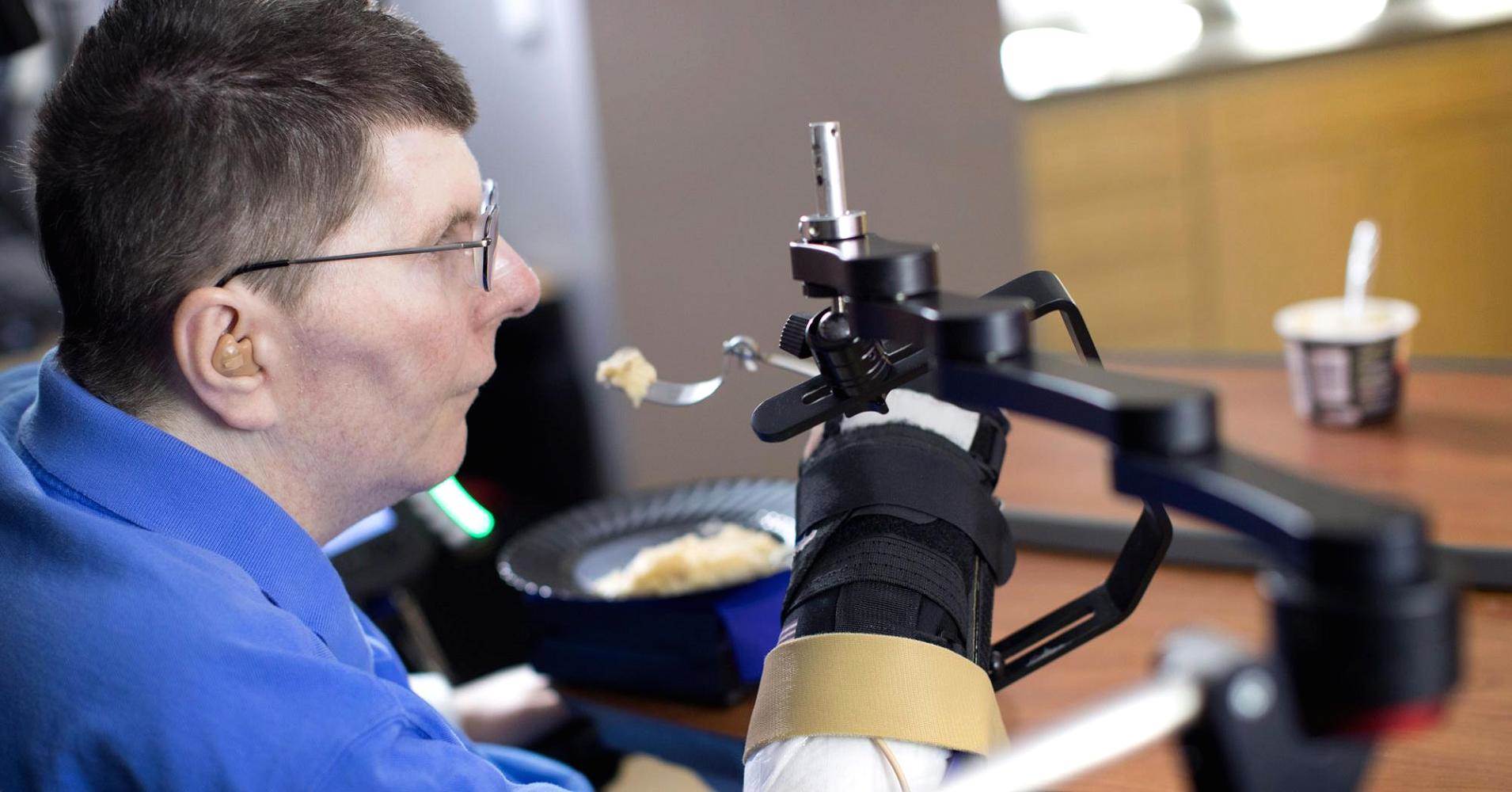A man paralyzed from the shoulders down was able to move enough to eat and drink through the help of a new “neuro-prosthetic” device.
The researchers behind the study say this is the first time a device has restored the capacity to both reach with the arm and grasp with the hand in a person with a chronic spinal cord injury.
The research is part of an ongoing study of the BrainGate system, a device that has been shown to restore function in people with paralysis and limited mobility.
The study was published Tuesday in the journal The Lancet.
The team, which features researchers from several institutions in the United States and Europe, implanted a device in the brain of a 53-year-old man named Bill Kochevar who had been paralyzed eight years previous in a bicycling accident.
The brain implant was comprised of two tiny electrodes, each about the size of a low-dose aspirin pill, sitting just beneath the skull. The team also planted about 36 electrodes in the man’s arm, which stimulated various muscles.
The two pieces were connected by a computer that translated the brain signals into commands for the electrodes in the arm.
Kochevar had to spend about four months training the system to recognize the brain signals that indicated the action he wanted to take.
After a total of 12 months, Kochevar was able to use the device to move enough to scratch an itch, feed himself a meal and drink from a cup.
There are devices that have been shown to perform similar tasks, but the researchers say their work allows more movement than previous equipment.
“Although similar systems have been used before, none of them have been as easy to adopt for day-to-day use and they have not been able to restore both reaching and grasping actions,” said A. Bolu Ajiboye, one of the study’s lead authors and a researcher in the department of biomedical engineering at Case Western Reserve University, in a news release.
Here is a video of the system at work:
There are some important limitations. First, Kochevar had to watch his arm as he moved it — his paralysis had robbed him of his ability to intuitively sense the movement and position of his arms without looking at them.
However, the study quoted Kochevar as saying he did not have to strain mentally in order to use the device.
“It’s probably a good thing that I’m making it move without having to really concentrate hard at it,” Kochevar said in the paper. “I just think ‘out’ and it just goes.”
The researchers noted in a release accompanying the paper that progress is being made toward getting the brain implant to work wirelessly with the system on the arm, and researchers are also striving to make the movements smoother and more accurate.
Right now the device is only available in the United States for investigational purposes, and researchers caution it could be years before such therapies are available to the public.
But it represents a significant step for returning independence to paralyzed people.







